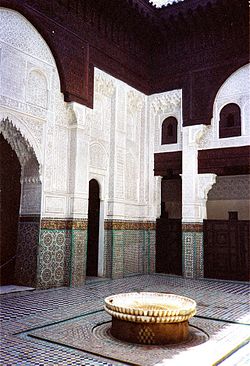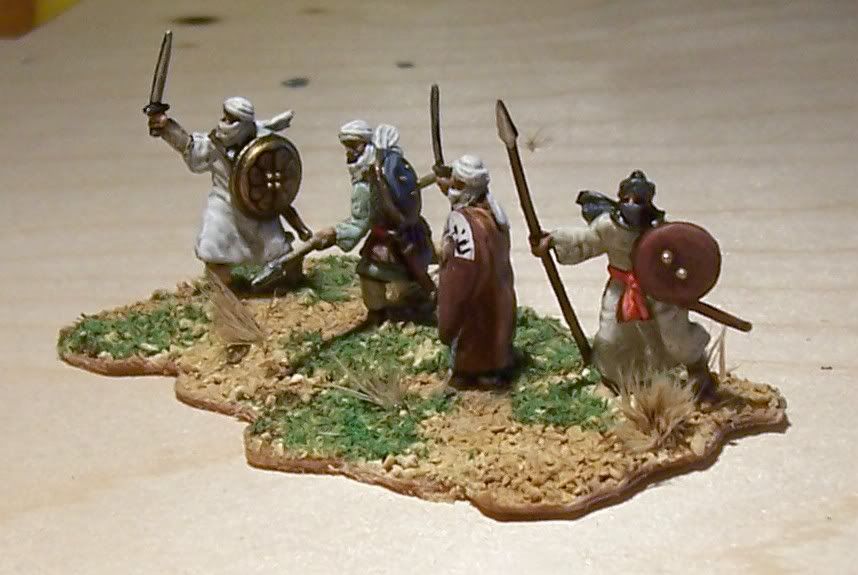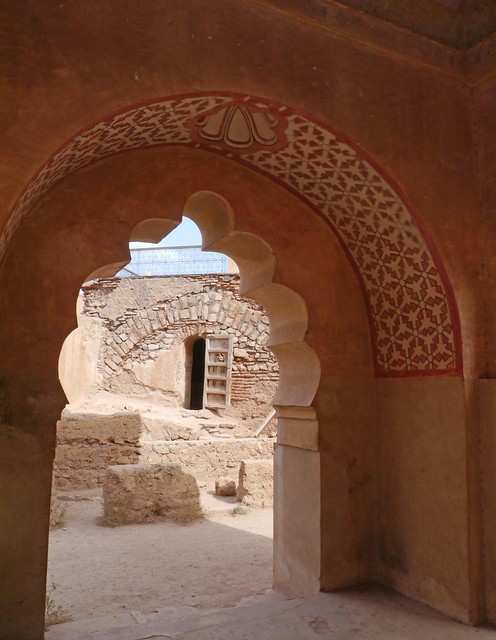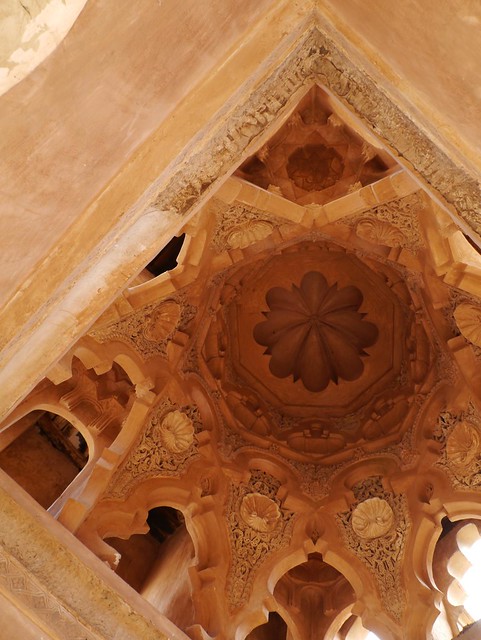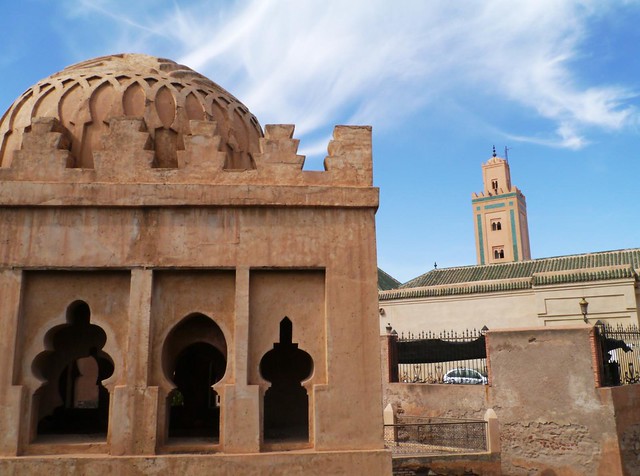Alawite dynasty (1664-present)


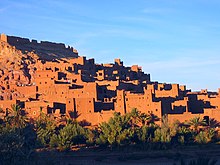
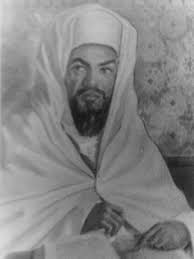


Sharifian Empire Alawite 1700
Greater Morocco and the trans-Saharan trade
One of the most famous is the Alaouite Sultan Moulay Ismail, the second ruler of the dynasty, who columnists and eyewitnesses agree to give 26 years at its inception (1672). He is the half-brother Moulay M'hammed and Moulay Rachid, born a black slave that he will keep a matte pronounced. His reign between 1672 and 1727. Moulay Ismail succeeded his half-brother Rachid, died accidentally in Marrakech. Sultan impose its authority over the entire Sherifian Empire, with its army of militia soldiers black slaves from Senegal, Mali and Guinea (the Abid al-Bukhari, real Janissaries dedicated to the African person exclusive of the Sultan and comparable to the Janissaries of the Ottoman Empire and Safavid Persia gholams of) and Arab tribes guich (Oudayas Cherrardas, Cheragas). Guich in the system, tribes benefit from tax exemptions and sales of agricultural land in exchange for their service, but this leads to the formation of an all-powerful military caste in which the Makhzen also recruits a large part of its staff. The Ismaili State is a formidable administrative control of the country from Meknes, new imperial capital in lieu of Fez and Marrakech. Under the reign of Ismail Meknes gets a Forbidden City to the Moroccan way (including the organization and function have similarities with the Forbidden City in Beijing), together with its palaces, ponds, mosques, gardens and fortresses. This gigantic structure is designed to house the king, his court, his harem, his personal guard and all the officials of his administration.
Bab el Mansour Aleuj in the imperial city of Meknes, completed in 1732.
Moulay Ismail, Sultan of Morocco from 1672 to 1727.
Ismail is often compared to its European alter ego Louis XIV, the Moroccan Sultan also maintained a correspondence with the king of France, in which he asks his daughter, Marie Anne de Bourbon (1666-1739), Princess of Conti said as Mademoiselle de Blois. Demand will not result from the Sun King. The Moroccan ambassador to France in 1699, the Admiral "seas Moroccan" Abdallah Ben Aicha, is the author of the first test in Arabic describing the splendors of Versailles and the French royal court. He followed a few years (1693) Pidou François Baron de Saint-Olon, Ambassador of France in Meknes, author of a "relationship" of the "kingdom of Fez and Morocco." Relations between the two countries have a declining phase due to the failure of the redemption of Christian captives by religious missions, and also because the plight of Muslims convicts detained in France. The Franco-Moroccan was motivated by the opposition of the two countries to the Spain of Charles II, but the throne of Spain Philip V (Philip of France, Count of Anjou), grand-son of Louis XIV , terminate this agreement. Therefore formal diplomatic ties are severed between Meknes one hand and Paris and Madrid on the other hand in 1718. They will be restored in 1767. Ismail indeed considers Spanish-French monarchy of the Bourbons as now entirely hostile to the interests of Morocco. France is therefore superseded in England by Empire Sharifian, as illustrated by the brilliant British Embassy Commodore Stewart and John Windus 172,156 in Meknes.
Abdelkader Perez, Admiral of the Imperial Fleet Sharifian under Moulay Ismail (early eighteenth century)
Ismail leads a continuous war against the rebellious tribes of the Atlas (he eventually submitted) but also against external enemies: Spanish, English (at least prior to removal from Tangier in 1684) and the Ottoman Regency neighboring Algiers shortly covet the region of Oujda. Sultan extends the authority of Sharifian Mauritania to Senegal River with the help of Moorish emirs of Adrar, Trarza and Brakna, reaffirming the sovereignty of the country Makhzen Chinguetti. To the east, the oasis of Tuat are submitted. In 1700, Ismail also delivers military campaigns against some of his own son eager to carve out principalities in the Souss, Marrakech and the Oriental.
Temim Mohammad, Ambassador of Morocco, the Italian Comedy (1682), Antoine Coypel (1661-1722), Versailles.
From 1727 to 1757 Morocco has a serious dynastic crisis in which Abid al-Bukhari made and unmade sultans, while the tribes guich rise and razzient imperial cities. Other tribes benefit from anarchy to enter dissent (Siba). This troubled period emerges the figure of Moulay Abdallah II of Morocco, overthrown and restored several times between 1729 and 1745. He must suffer the secession of his half-brothers who founded kingdoms true in every province, with the support of such a faction or guich Abids. Similarly, the inhabitants of Rabat Salé and reconnect with autonomism privateer, and northern Moroccan pashas family Rifi establish a dynasty that controls Tangier and Tetouan. Powerful confederations, such as Aït Idrassen and Guerrouanes, come into dissent and seize the caravan trade connecting the commercial centers of the Empire to chérifien Saharan oases and Bilad as-Sudan which detaches from the Moroccan authorities.
George Washington letter addressed to Mohammed III at the Treaty of Peace and Friendship Moroccan-American signed in Marrakesh in 1787.
Order is restored by Mohammed III of Morocco (1757-1790) which restores the unity and authority of the sultanate Makhzen official. Policy Mohammed III is characterized by the opening diplomatic and commercial Morocco who want to recover customs duties to alleviate the tax burden on fellahs57. Treaties were concluded with the major European powers, who maintain consulates and trading houses in the new Moroccan Atlantic ports founded by Mohammed III. The best known example of these new commercial centers is the city of Mogador (Essaouira), designed by the French engineer Theodore Cornut working on behalf of the Sultan. Ports Anfa (Casablanca) and Fedala (Mohammedia) are also developed and symbolize the economic development of Atlantic coastline, free from foreign occupation after the reconquest of the Portuguese Mazagan and the definitive end of Portuguese Morocco in 1769. Mohammed III is also the first head of state to recognize the independence of the young American republic of the United States in 1777. The Cherifian sovereign establishes a correspondence friendship with George Washington58, which is the United States, under the "open door policy" to conclude a treaty with Morocco of peace, friendship and commerce July 16 1786 (for a period of fifty years, renewed by the Treaty of Meknes 1836) 59. On the domestic front, the reign was marked by riots provoked by the body Abids (in Meknes in 1778), and a severe drought in six years (1776-1782) that generates economic and demographic consequences disastrous. This negative situation will become more pronounced during the reign of Al-Yazid of Morocco (1790-1792) famous for his cruelty and his unfinished war against Spain. His death leads back disorders dynastic war and tribal anarchy. The Empire was divided into two rival makhzens, one in Fez (with Moulay Sulayman Morocco), the other in Marrakech (Morocco Moulay Hisham's). Sulayman is who wins and reunites the Sultanate in 1797.
Moulay Sulayman (1792-1822) pursued a policy of isolationism. Sultan closes the country to foreign trade, especially in Europe, and removes customs posts created by his father. Internally its inspiration dahirs openly Salafi cause tribal revolts and urban related to its decision to ban moussems and maraboutism. The Berbers of the Middle Atlas, including Ait Oumalou, gather under the leadership of warlord and Boubker Amhaouch form a large tribal coalition which even join Rif. During the 1810s, the army Makhzen towels and heavy defeats toppling of Fez and the decline of the sultan on coastal cities remained under his authority. Insurgent tribes and Fez go to try to impose own son Sulayman, Moulay Said, at the head of the state, but ultimately fail.
On the outside, the Sultan succeeded in attempts to remove diplomatic and military influences exerted by the Emperor Napoleon, a near neighbor of Morocco since the occupation of Spain by French troops in 1808 (War of Independence ). Moulay Sulayman turns however to Saud bin Abdulaziz, Emir of Nejd and the first Saudi state, showing a strong interest in the Wahhabi Salafism full progression60. This strategic alliance is due to the anti-Ottoman affinities that characterize the Alawite ruler Emir as Saudi Arabia, as well as the religious sensitivities of Sulayman. Taking advantage of its military campaign against the Regency of Algiers, the sultan finally able to expel the Turkish troops of the Bey of Mascara occupying the eastern provinces of Oujda and Berkane since 1792, and to restore the authority of the Tuat and Sharifian other oases of the central Sahara.
the Sultan of Morocco Moulay Abd ar-Rahman to his palace in Meknes by Eugène Delacroix (1845)
Bombing and attacks against French Mogador (Essaouira) under the orders of François d'Orleans Prince de Joinville and the son of Louis-Philippe I, during the Franco-Moroccan War of 1844
However, the Sultan finally abdicated in 1822 in favor of his nephew Abd ar-Rahman ibn Hisham, after the heavy defeat inflicted by the army Makhzen zaouia Cherradia near Marrakech. Moulay Abd ar-Rahman (1822-1859) tries to escape the Empire Shereefian isolation outside, but his intentions are thwarted by the first assault of modern European colonialism. The reign of this Sultan is indeed the conquest of Algeria by France, in which Morocco is involved in providing support to the Emir Abd el-Kader, but finds himself defeated at the Battle of Isly (campaign French military of Morocco 1844), and the Spanish-Moroccan War (which the Spaniards call African War) which ended with the Spanish occupation of Tetuan in 1860. Following this catastrophic conflict for the Makhzen, who should pay Spain a war indemnity of two hundred million douros61 (borrowed from British banks), Mohammed IV of Morocco (1859-1873) successor Moulay Abd al Rahman began a policy of modernization Shereefian Empire. The army is the first field of the structural reforms. The tribal system guich is abolished and replaced by a recruitment to all tribes "nouaïbs" (subject to the regular tax), which should provide Tabors (units) regular askars (soldiers). The command of these troops was entrusted to European military advisers, like the Scots Harry Aubrey de Maclean (who gets the title of boss for the organization of an elite regiment formed on the British model) and weapons are purchased from foreign companies such as the German firm Krupp62.
Hassan I of Morocco, Sultan 1873-1894
Along with the modernization of the army, industries are created (munitions factories, sugar, paper), technological advances are recorded as the installation of the first modern printing press Arabic in Fez Morocco in 1865. But this policy entails considerable expenses that require substantial funding. The Makhzen is therefore forced to raise additional taxes not comply with Islamic law, unpopular and frowned quickly by the ulema. Tensions related to the decision to break out after the death of Mohammed IV and the accession of his successor Hassan I in 1873. They are in the form of urban riots social violently repressed, whose revolt Tanners of Fes is an example illustratif63. The reign of Hassan I corresponds to the will of the sultan to reconcile the demands of the modernization of the state social and political complexities of Morocco. This rule also fits in the context of European imperialist rivalries become even more pressing in the wake of the Madrid Conference of 1880, which foreshadows the future sharing Sharifian Empire on the international scene. Like Turkey, Iran or China at that time, Morocco became a "sick man" as the expression goes in circles colonialists. Through economic concessions and the system of bank loans, each of interested European powers, including France, Spain, the United Kingdom and Germany, hoping to pave the way to a complete conquest of the country. The skill is knowing Makhzen hold off the combined greed of European imperialism and play rivalry between the powers. But the death of Hassan I, occurred during an expedition in the Tadla in 1894, leaving power in the very young Abd al-Aziz Morocco (then aged only 14 years), son of a circus favorite of the imperial harem , some Lalla Reqiya64.
The death of Hassan I of Morocco in 1894, of the Journal illustrated.
Abd al-Aziz Morocco (Moulay Abd al-Aziz), Sultan 1894-1908
A real regency is then held until 1900 by the Grand Vizier Ahmed ben Moussa, from the old guild Abid al-Bukhari Palace. The Grand Vizier continue knows intelligently pragmatic policy of Hassan I, but its disappearance aggravates anarchy and foreign pressure, as well as rivalry between Moulay Abd al-Aziz and his brother Moulay Abd al-Hafid, which finally burst in race war power. After the victory of Abd al-Hafid, young intellectuals and progressive reformers influenced by the revolution of the Young Turks in Istanbul and whose ideas are expressed by the newspaper Tangier "Lisan Al-Maghrib" try to submit a draft constitution Sharifian 11 October 190865. However, the deep institutional crisis of the Sultanate and European pressure increased prevent the completion of such a project. The weakness of the Makhzen also allows an adventurer named Ben Driss Jilali best known as the Rogui Bou Hmara to impersonate a son of Hassan I, and to be recognized as Sultan Taza and throughout the north-east of Morocco for a few years before finally being captured in 1909. Another rebel leader al-Raisuni establishes its stronghold in the country and Jebala Asilah where he rejects the official authority and causes its abductions of U.S. citizens personal intervention of the President of the United States Theodore Roosevelt, the point of sending the U.S. Navy in Tangier in retaliation.
morocco culture,moroccan food,morocco food,moroccan cuisine,morocco beaches,moroccan meal,beaches in morocco,moroccan culture,hercules cave,hercules cave morocco

















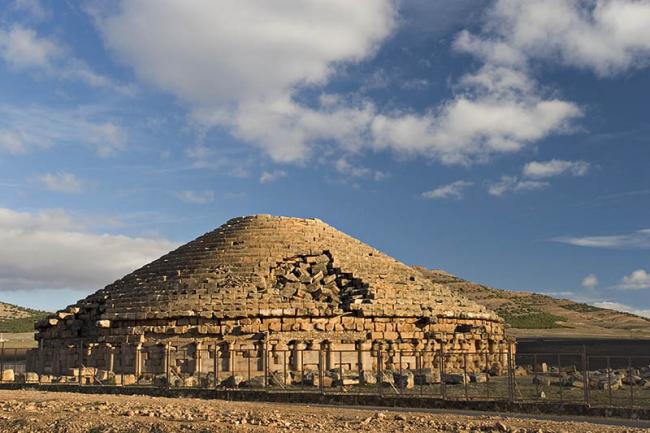

.PNG/220px-Marinid_dynasty_1258_-_1420_(AD).PNG)

